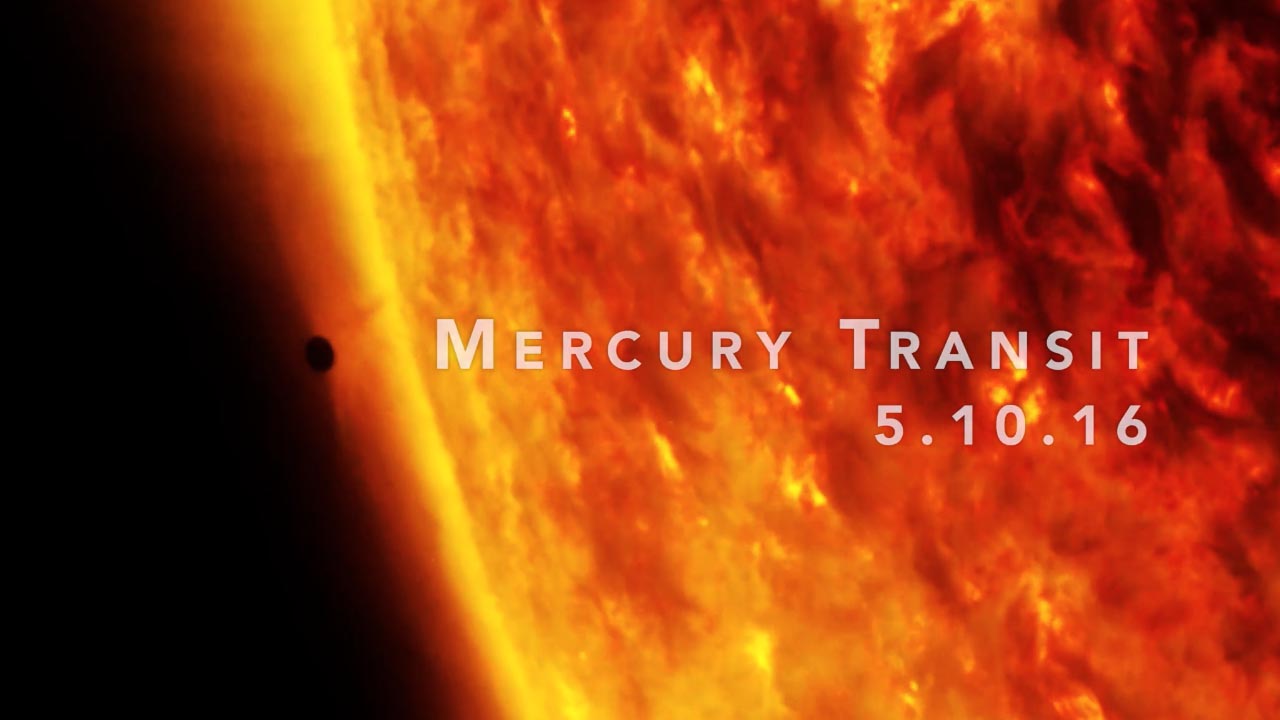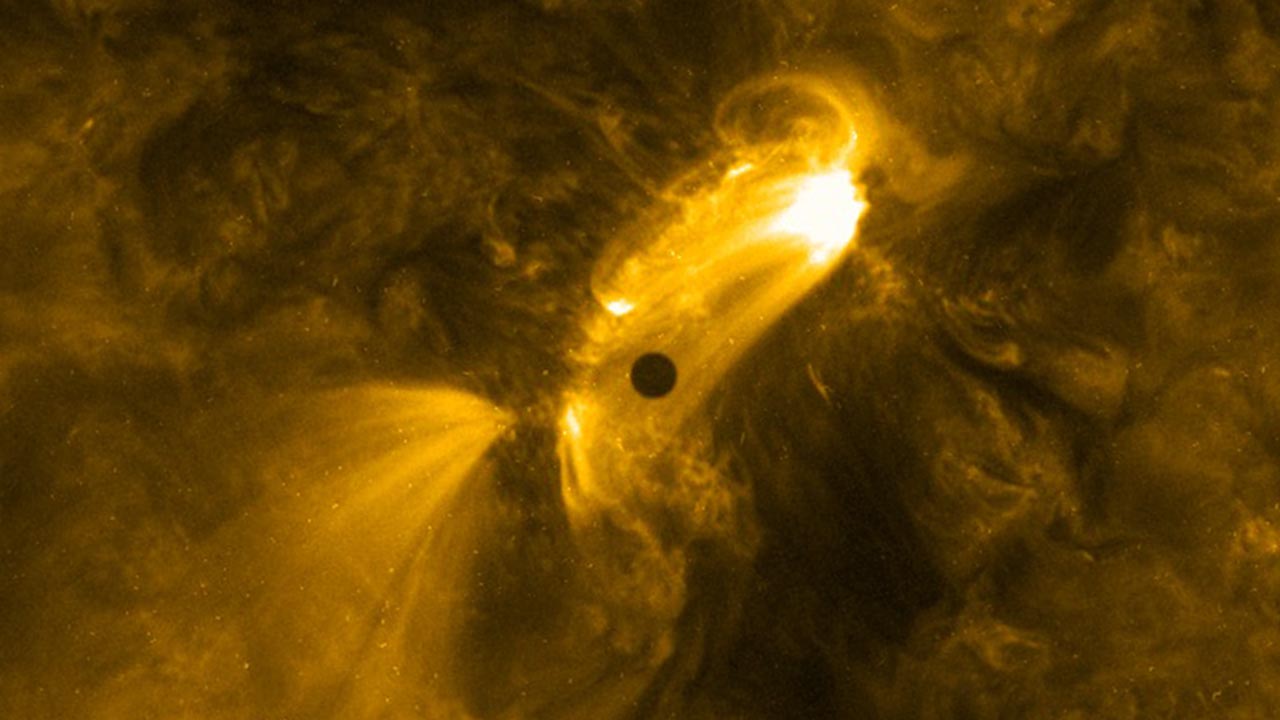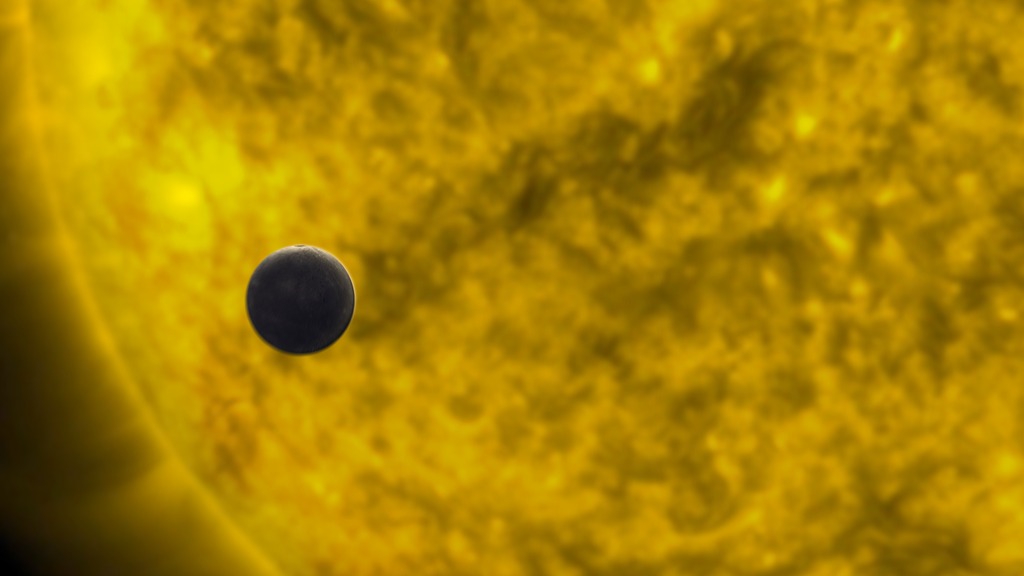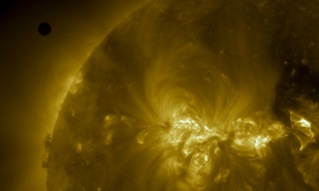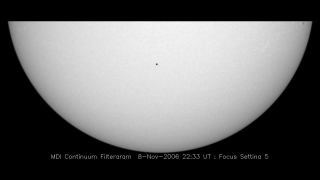Mercury Transit Live Shots May 9, 2016
NASA will broadcast a stunning view of Mercury on May 9 as it journeys across the sun. The event, known as a transit, occurs when Mercury passes directly between Earth and the sun. This rare phenomenon will cause Mercury to look like a black dot gliding across the sun’s face. Mercury’s last transit was in 2006, and it won’t happen again until 2019!
Starting at 7:12 a.m. EDT, Mercury will spend more than seven hours travelling across the sun. NASA’s Solar Dynamics Observatory will take the first near real time, ultra-high definition images ever for this event. This is also an opportunity for NASA scientists to fine tune the spacecraft’s cameras, using a method that can only be done during a transit.
NASA scientists are available Monday, May 9 from 6:00 a.m. – 11:30 a.m. EDT to show your viewers amazing images of this event as it unfolds. Scientists will also share why transits are important, and how they’re being used to learn more about planets in our solar system—and beyond.
Scientists have been using transits for hundreds of years to study the planets in our solar system. When a planet crosses in front of the sun, it causes the sun’s brightness to dim. Scientists can measure similar brightness dips from other stars to find planets orbiting them, and can calculate their sizes, how far away the planets are from their stars, and even get hints of what they’re made of. Upcoming NASA missions will watch for transits outside our solar system in order to find new planets, including some that could resemble Earth.
****To book a window***
Contact Claire Saravia – claire.g.desaravia@nasa.gov
Suggested questions:
1. Mercury is trekking across the sun today for the first time in 10 years. How can we see this transit?
2. Why are transits so important to astronomers?
3. Why does NASA watch the sun?
4. NASA is using the transit method to study planets beyond our solar system. What do we expect to learn from future missions doing this?
5. Where can we learn more?
HD Satellite Coordinates for AMC9-K17: AMC-9 Ku-band Xp 17 Slot AB| 83.0 ° W Longitude | DL 12045.8 MHz | Horizontal Polarity | QPSK/DVB-S | FEC 3/4 | SR 13.235 Mbps | DR 18.2954 MHz | HD 720p | Format MPEG2 | Chroma Level 4:2:0 | Audio Embedded
The Solar Dynamics Observatory captured images of Mercury transiting across the sun on May 9, 2016.
NASA scientist Dr. Stephen Rinehart talks about the May 9 Mercury transit, why transits are important and how scientists are using transits in the search for exoplanets.
Mercury transit Interview with NASA Scientist Dr. Alex Young
For More Information
Credits
Please give credit for this item to:
NASA's Goddard Space Flight Center
-
Producers
- Claire Saravia (NASA/GSFC)
- Michelle Handleman (USRA)
- Genna Duberstein (USRA)
- Scott Wiessinger (USRA)
-
Technical support
- Aaron E. Lepsch (ADNET Systems, Inc.)
-
Editor
- Stuart A. Snodgrass (HTSI)
-
Videographer
- Rob Andreoli (Advocates in Manpower Management, Inc.)
-
Director
- Pat Kennedy (HTSI)
-
Animators
- Adriana Manrique Gutierrez (USRA)
- Walt Feimer (HTSI)
-
Production assistants
- Mike Velle (HTSI)
- John Caldwell (Advocates in Manpower Management, Inc.)
Release date
This page was originally published on Monday, May 2, 2016.
This page was last updated on Wednesday, May 3, 2023 at 1:48 PM EDT.
